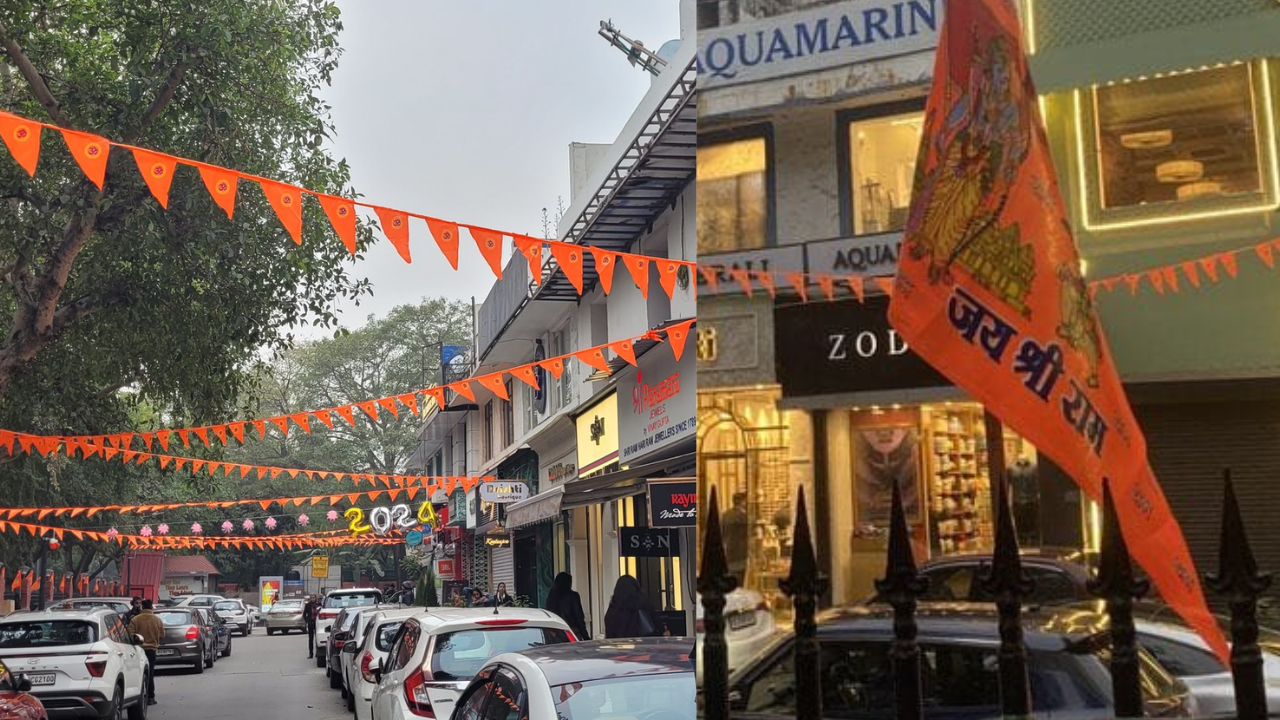– Maaz Ahmad Javed (M.Tech. AMU)
On January 22, glimpses of the historic Pran Pratishtha program held at the Ayodhya Mandir revealed a captivating image depicted in the changing landscape of the country. Some individuals proudly claimed in front of the media that the nation has become a Hindu Rashtra, just awaiting official declaration. On the other hand, some proposed amendments such as restrictions on cow slaughter, homecoming, and ending love jihad, suggesting that the country will transform into a Hindu Rashtra through these actions.
Media coverage and public responses range from enthusiastic pledges to skepticism, with some saying that the “Ram Yug” has begun. However, some dissenting voices among the Hindu community express dissatisfaction, accusing the government of exploiting a religious event for political gain and some were angry that they were not invited. The opposition parties also abstained from their participation in the Pran Pratishtha program, acknowledging manipulation for political benefits.
Different state governments declared holidays on this occasion, each attempting to establish itself as a guardian of Hinduism. This evolving image of changing India now seems comprehensible only to those who reside in the paradise of fools. The significance lies in intertwining religion and politics across the entire political and social landscape. The evidence and reports indicate that the architects of this movement had the same objectives which have already been implemented. Although the history of this movement testifies that all the false claims such as birthplace of Ram or the act of placing idols in 1949, demolishing a temple and building a mosque, threatening the Muslim leadership for compromise, opening the lock of the mosque through deceit, or causing bloodshed in the Rath Yatra in all stages using illegal means such as lies, theft, deception, intimidation, and corruption.

The whole country was painted orange with flags bearing slogans of Ram in the so called ‘Secular’ country
Shame reached its peak when, in broad daylight, those responsible for demolishing a five-century-old mosque expressed remorse and regret in front of the media. After that, the judiciary’s attitude has shown that the country’s law has become a plaything. And now, whoever has the stick, also has the buffalo. Subsequently, the judiciary has accepted that the mosque was not built by demolishing the temple, also Judiciary accepted that idols were placed in mosque through deception, and demolishing the mosque was all criminal acts.
Despite the legal verdict, the majority, emotionally attached, granted this land to the criminals. Thirty years after the Babri Masjid’s demolition, those mourning its destruction now proudly admit their involvement. The thought-provoking point here is that these people are portraying the mosque as a symbol of slavery and presenting their movement as a freedom movement. Democracy has given privilege to the majority that continues to dance naked in the country based on their faith (Astha). Therefore, where this matter will end is unknown to anyone. After Babri Masjid, the issue of Gyanvapi Mosque and Mathura’s Shahi Eidgah has also reached court. However, it is not just about these three places; rather, every famous mosque and shrine has been targeted by the ‘custodians of faith.’ Along with mosques and shrines, attacks are also ongoing on other Islamic identities. Examining statements from both the public and intellectuals, it is evident that most interpret these changes as a Hindu Rashtra and ‘Ram Rajya’.
The reality of this “Rashtra” and “Yug” can only be explained by its supporters. The question remains whether connecting ongoing injustices and oppressions in the country to this narrative is an honor or a disgrace? If this is the beginning of a “Hindu Rashtra,” it is challenging to foresee its end.
Throughout this narrative, voices have diminished that could weigh the matter on the scale of justice and could have said that power doesn’t make a person righteous, and every rise has its fall. No matter how powerful Pharaoh is, drowning is his destiny. Sometimes the severity of circumstances leads to despair, but, like the magicians in court of Pharaoh’s, resilient individuals emerge who recognize the truth and don’t hesitate to confess.

No matter how powerful Pharaoh is, drowning is his destiny.
For those resilient individuals, there is never a time for despair. If we rise with full determination today, tomorrow could be ours. In these times, it is crucial to understand that the Muslim community has faced such challenges in every era. This doesn’t mean that we should sit back comfortably, but rather, there is a need to formulate a new practical wisdom with a perspective of hope. Because the more challenging the circumstances and the darker the night, the greater the need for resilient individuals to emerge.
“One will find the destination’s purpose only with the light in the eyes of a determined hawk in the dark night”
In such circumstances, serious accountability is necessary. We need to evaluate what we have lost and gained over these years. Also, need to assess the positive and negative impacts of this on social psychology of Muslims. Our fundamental interest lies in recognizing our position collectively and playing our role accordingly. We should abandon worldly standards and embrace Islamic values. Additionally, it is essential to apprehend those individuals who are making us captive to false ideologies, spreading the seeds of corruption within us, especially if representatives of the community are even slightly tainted with corruption. It is crucial to apprehend them in a timely manner
The statement of Allah, “Those who strive for Us – We will surely guide them to Our ways. And indeed, Allah is with the doers of good” (Qur’an, Al-Ankabut), should remain before us.

